How to Make a Christmas-Themed Panettone
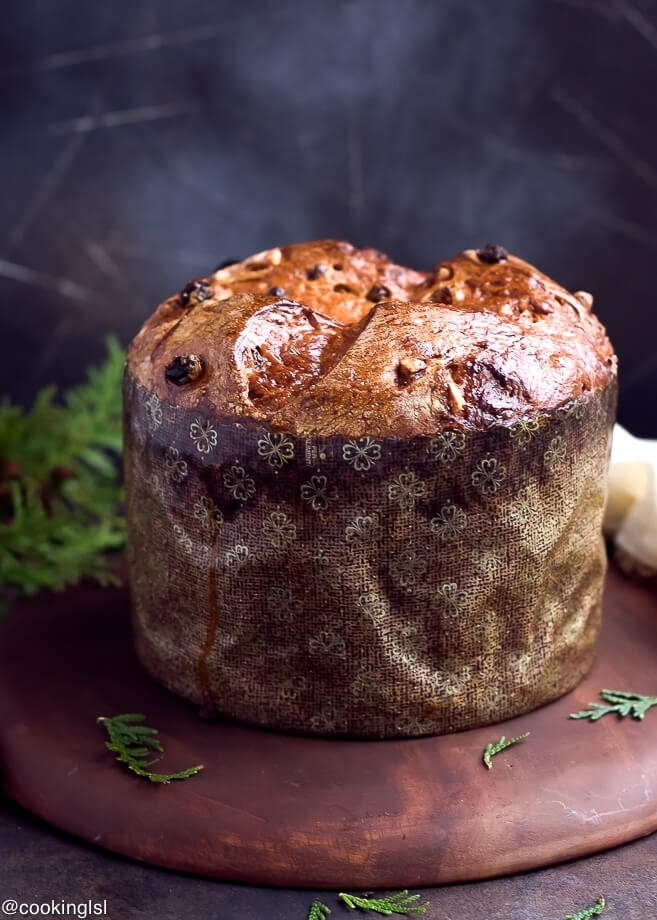 |
| Panettone. Photo: Cooking LSL |
What is Panettone?
From the Italian panetto or small cake, panettone is a large fruity enriched sweet bread, offered typically during Christmas throughout Italy and in Italian communities around the world. Originated in Milan, it is a large, dome-shaped cake that has been leavened with yeast. It has a slightly light and airy texture but a rich and buttery taste, and is not very sweet. The jury is still out on whether panettone is a cake or a bread because it's both as chewy as a loaf of bread and as fruity and sweet as a fruit cake. Pandoro, another Italian Christmas bread, is often confused with panettone but is a star-shaped golden cake, without any dried fruit, from the city of Verona.
Filled with dried fruits and candied peels, spongy panettone needs care and attention, but making it is not as difficult as it might seem, as our straightforward recipe shows. Sliced or pulled by hand, alone or with butter, cream, or fruit preserves, don't miss out on this wonderful dessert, great for brunches, coffee, and tea times, according to Thespruceeats.
Overview of Panettone Making Process
This is definitely an **advanced** recipe, for those who want a challenge. It is well worth the effort!
You will need an established sourdough starter/levain (can be either liquid or solid, which is called pasta madre). Pasta madre is said to be the better choice, but I have successfully used both (I will always opt for pasta madre now and that will be the subject of another post).
You will also need a standing mixer, panettone cases, and skewers or needles to insert at the bottom of the panettone so you can flip it over after baking to prevent collapsing. It is also highly recommended to have a thermometer to monitor the dough temperature and also a thermometer to gauge/monitor the temperature of the area where you will rise the dough.
The dough is made over 2 days, assuming you have an active pasta madre or liquid starter/levain.
On day 1, you will make the “first dough” and then let it sit for 12 hours (or overnight) and then you will add ingredients to make the “second (ie, final) dough”, which is then ultimately baked.
In addition to your starter being active and healthy, time and temperature control are critical to the success of panettone making, as reported by
READ MORE: Top 10 Best Delicious Traditional Cakes Around the World
How to make Panettone?
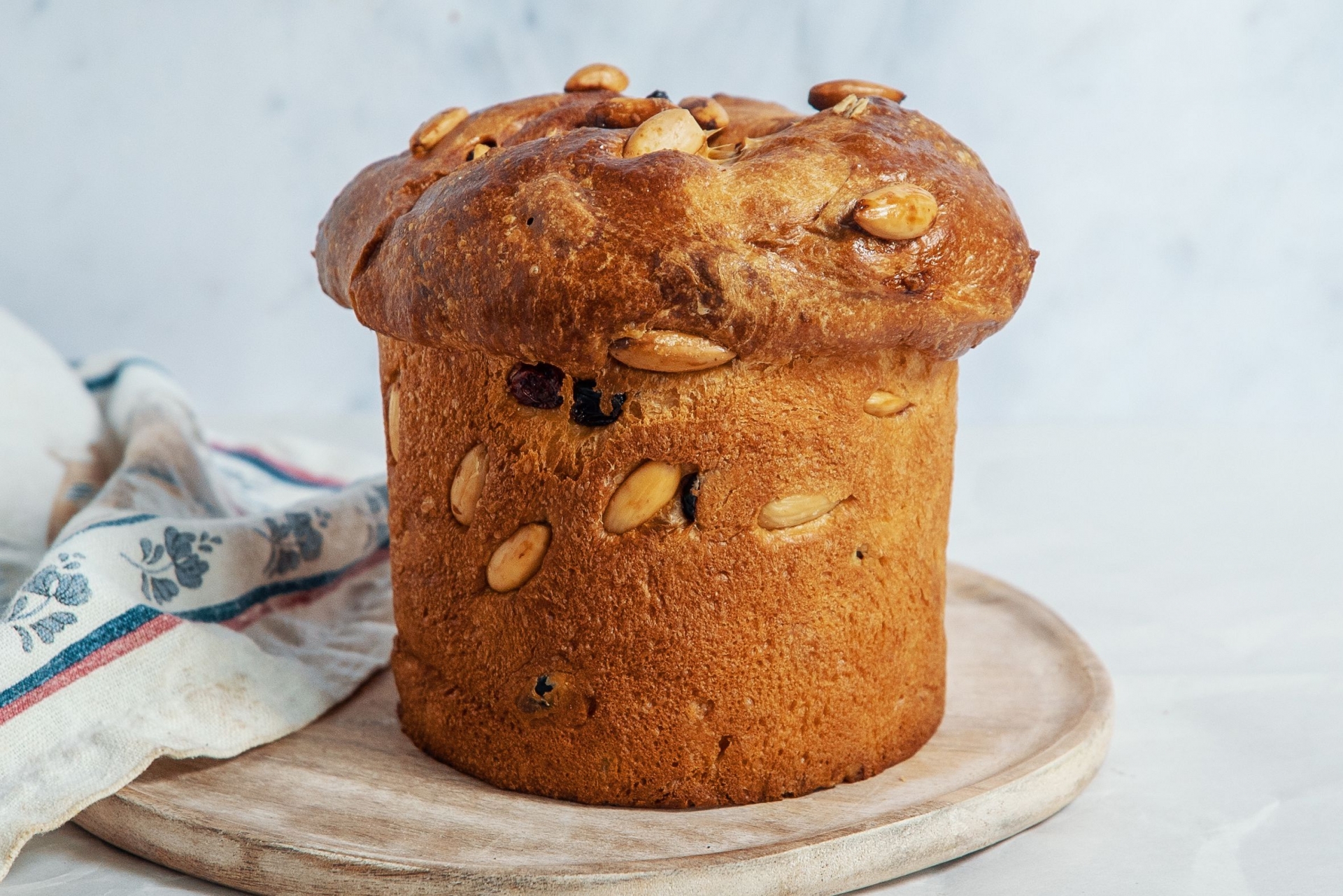 |
| Panettone. Photo: The Spruce Eats |
INGREDIENTS:
1 cup raisins
2 tablespoons light rum
2 tablespoons hot water
3¾ cups all-purpose flour
⅔ cup granulated sugar
½ teaspoon active dry yeast
½ teaspoon salt
¼ teaspoon lemon zest
½ vanilla bean (split in half lengthwise)
3 eggs (at room temperature)
⅔ cup tepid water
1 tablespoon honey
10½ tablespoons unsalted butter (well softened)
1 tablespoon unsalted butter (melted)
1 tablespoon unsalted butter (chilled)
⅔ cup candied citron (I used candied orange peel in ¼-inch pieces)
SPECIAL EQUIPMENT:
Panettone molds
(6x4½-inch - purchased at King Arthur Flour)
12- inch metal or wooden skewers
DIRECTIONS:
In a small bowl, combine the raisins with the rum and 2 tablespoons of hot water. Allow to soak at room temperature, stirring occasionally, until the raisins are plump and most of the liquid has been absorbed, at least 8 hours or overnight.
In a stand mixer fitted with a paddle attachment, mix together the flour, sugar, yeast, salt, lemon zest and vanilla bean on low speed until combined. In a medium bowl, whisk together the eggs, tepid water and honey. With the mixer on low speed, pour the egg mixture into the flour mixture. Increase the speed to medium-low and mix until all of the ingredients are combined. Add the softened butter, 1 tablespoon at a time, mixing until incorporated before adding more. Increase the speed to medium-high and beat until the dough is smooth and elastic, about 8 minutes.
Drain the raisins, discard the soaking liquid, and stir together with the candied citron and 1 tablespoon of melted butter. Stir this mixture into the dough with a wooden spoon.
Place the dough in a large bowl, cover with plastic wrap, and let rise in a cold oven with the door closed until it has nearly tripled in volume, 12 to 15 hours.
Locate and discard the vanilla bean, then sprinkle the dough lightly with flour and scrape out onto a lightly floured surface. Sprinkle a bit more flour onto the dough, then fold the edges of the dough in towards the center, forming a loose ball, and place, seam-side down, into the panettone mold. Cover with a damp kitchen towel (not terry cloth) and let rise in a draft-free place at warm room temperature until the dough is just above the top of the mold, 3 to 5 hours.
Preheat oven to 370 degrees F.
Place the dough-filled panettone mold on a baking sheet. Use a very sharp serrated knife to score an "X" across the entire surface of the dough. Place the 1 tablespoon chilled butter in the center of the X and bake until a wooden skewer inserted into the center comes out slightly moist but not wet, 60 to 75 minutes (the panettone will be very dark).
Remove from the oven and pierce 12-inch metal or wooden skewers all the way through the panettone (including the paper) 4 inches apart and 1 inch from the bottom so the skewers are parallel. Hang the panettone upside down over a large stockpot and cool completely before cutting. To store the panettone, wrap tightly in plastic wrap, then either place in a resealable plastic bag, or wrap again in foil. The bread will keep at room temperature for up to 1 week. (I have not tried freezing the bread, but I believe it would freeze well, wrapped in plastic, then foil, then placed in a resealable bag.)
Tips for Making PanettoneYour starter or levain must be in very good shape and not acidic at all. You must refresh three times during the day of mixing the first dough. Suggested time table is 9AM; 12noon; and 4PM and then make dough at 8PM. Some experts recommend it is best to complete three cycles of refreshments (that is, over a total of 3 days, refresh your starter 3 times daily) Use the same flour to feed your starter that you do to make your panettone. Follow a well tested recipe (Giorilli, Massari, etc). Ensure your dough is well kneaded and well developed. The dough needs to be strong in order to absorb and carry the fats in the high amounts of butter and egg yolk. It may seem like it will take a very long time for the dough to finally come together. At times, I have even let the dough rest a few minutes before continuing to mix. Eventually, what seems like a batter will turn into a very soft and wet dough. Use the highest quality ingredients, including vanilla bean or real vanilla extract, not imitation. Measure out all ingredients before starting so you can concentrate on the dough development. Monitor the temperature of the dough! The ideal dough temperature is 77 degrees F to a maximum of 82.5 degrees F. If the dough temperature rises above 86 degrees F, you risk degrading the gluten. If in doubt, place dough in the refrigerator to cool before proceeding. Monitor during the long mix. Conversely, dough temperature below 71 to 72 degrees F will result in gluten not developing properly and give you a very slow rise. |
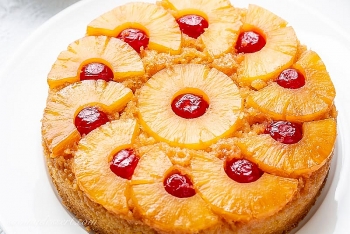 Easy Steps to Make a Pineapple Upside Down Cake Easy Steps to Make a Pineapple Upside Down Cake This classic cake forever remains a favorite dessert for all generations. What are you waiting for? Check the information given below and start making one ... |
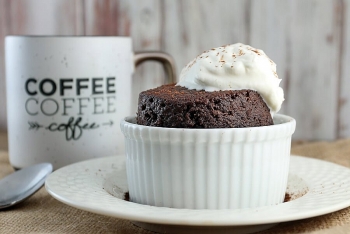 15 Mins to Bake Mug Chocolate Cake 15 Mins to Bake Mug Chocolate Cake A chocolate mug cake recipe is one of those super simple desserts that everyone needs to have in their back pocket just in case a ... |
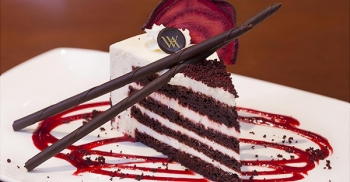 Easy Steps to make a Red Velvet Cake Easy Steps to make a Red Velvet Cake Red velvet cakes are the perfect dessert for pretty much any occasion you can think of. Let's follow the instructions of making a red velvet ... |


























